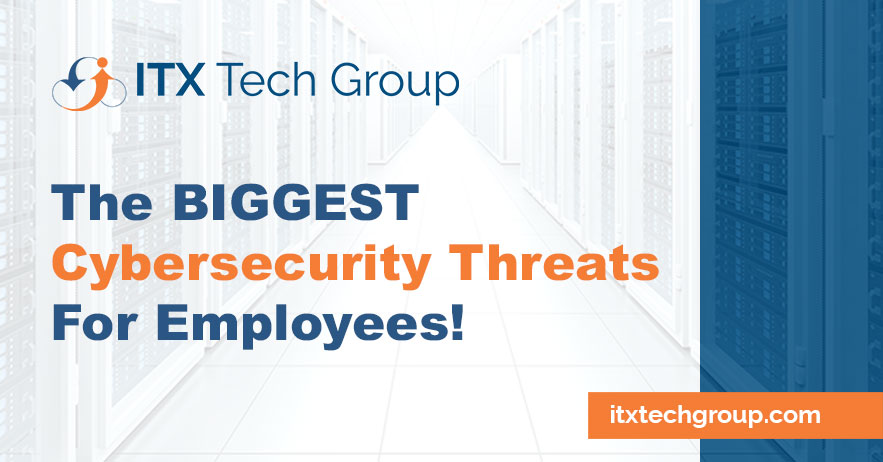In the ever-evolving digital landscape, cybersecurity threats have become more sophisticated and prevalent than ever before.
Businesses and individuals alike are potential targets for cybercriminals aiming to exploit vulnerabilities and gain unauthorized access to sensitive information.
To safeguard against these threats, employees play a crucial role in understanding the risks they face.
In this article, we’ll explore some of the biggest cybersecurity threats that employees should be aware of, the reasons why they pose a threat, and provide real-world examples to underscore the importance of vigilance.
Common Cybersecurity Threats Employees Should Know About
1. Phishing Attacks
Threat: Phishing attacks involve sending fraudulent emails that appear legitimate, aiming to trick recipients into revealing sensitive information, such as passwords or credit card numbers.
Example: An employee receives an email that appears to be from their bank, requesting urgent account verification. The email contains a link that directs them to a fake website designed to steal their login credentials.
2. Ransomware
Threat: Ransomware is a malicious software that encrypts a victim’s data, rendering it inaccessible until a ransom is paid.
Example: A healthcare organization’s entire patient database is encrypted by ransomware, rendering patient records inaccessible until a substantial ransom is paid.
3. Malware
Threat: Malware is any software specifically designed to harm, exploit, or gain unauthorized access to systems or data.
Example: An employee unknowingly downloads a seemingly harmless software update that contains malware. The malware then gains access to the company’s network and steals sensitive customer information.
4. Social Engineering
Threat: Social engineering exploits human psychology to manipulate individuals into divulging confidential information.
Example: An attacker impersonates an IT technician and calls an employee, convincing them to provide their login credentials under the pretext of troubleshooting a technical issue.
5. Insider Threats
Threat: Insider threats involve employees, contractors, or partners who misuse their access to systems and data for malicious purposes.
Example: A disgruntled employee with access to financial records steals customer credit card information and sells it on the dark web.
6. Drive-By Downloads
Threat: Drive-by downloads occur when malware is downloaded to a user’s device without their knowledge or consent by simply visiting a compromised website.
Example: An employee visits a seemingly harmless website to find information related to their work, unknowingly downloading malware that infects their computer.
7. Man-in-the-Middle Attacks
Threat: In these attacks, cybercriminals intercept communication between two parties to eavesdrop, modify, or steal sensitive information.
Example: An employee connects to a public Wi-Fi network to access work emails, but a hacker intercepts the communication, gaining access to their login credentials.
8. Credential Stuffing
Threat: Cybercriminals use stolen usernames and passwords from previous data breaches to gain unauthorized access to other accounts due to users reusing the same credentials.
Example: A hacker uses login credentials stolen from a breached social media platform to gain access to the employee’s work email and sensitive company data.
Conclusion
As businesses continue to rely on technology, the importance of cybersecurity awareness cannot be overstated.
Employees serve as the first line of defense against cyber threats. By understanding the various types of threats and their potential consequences, employees can recognize warning signs and take proactive measures to protect themselves and their organizations.
Cybersecurity education, combined with regular updates on emerging threats and best practices, empowers employees to make informed decisions and contribute to a secure digital environment for everyone.
ITX Tech Group has been serving small, medium, and large scale businesses with their IT support needs all over the United States since 2011, so we’re confident we can provide you with affordable, professional IT solutions for years to come!
Connect with us for a free consultation to discuss your business technology needs.

